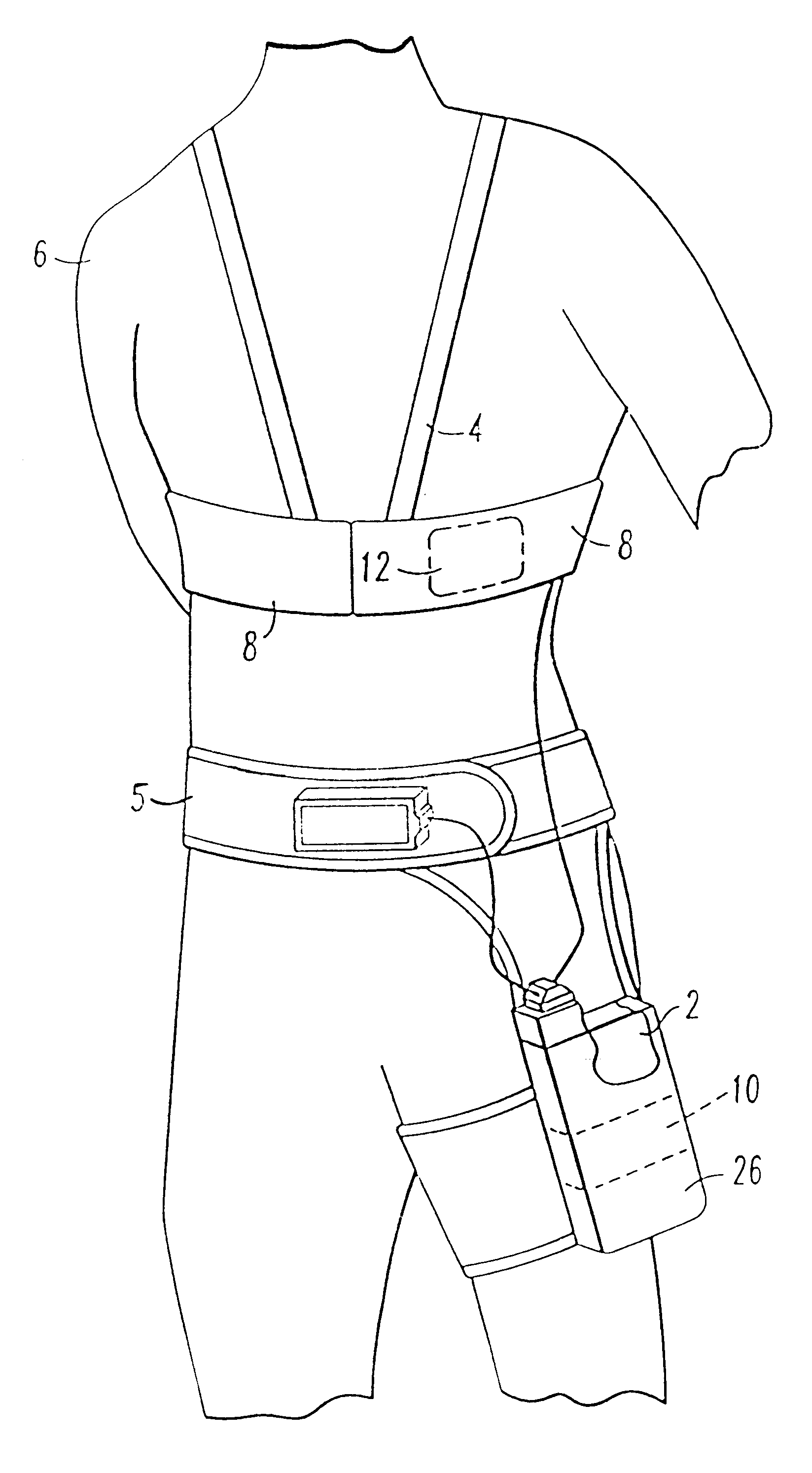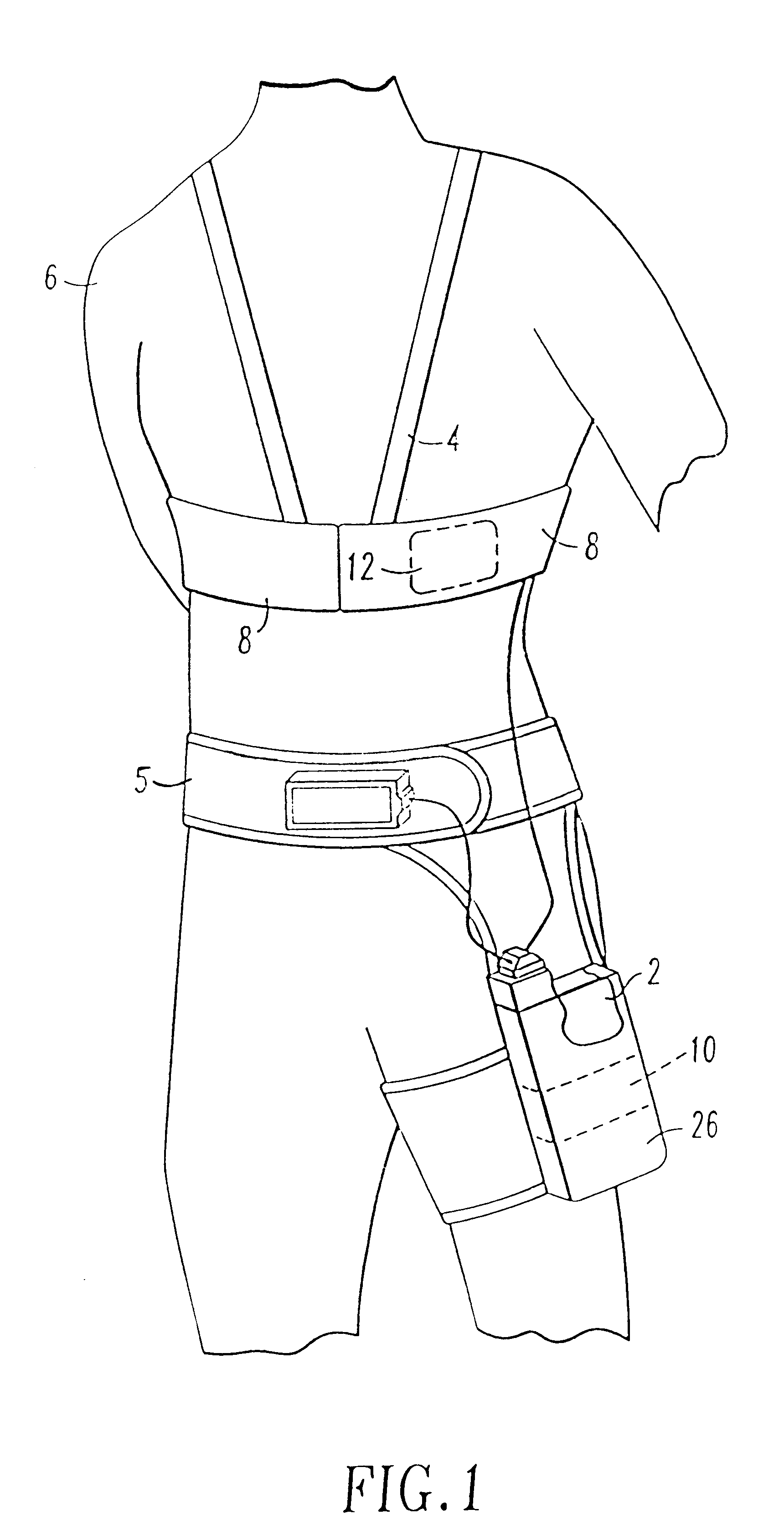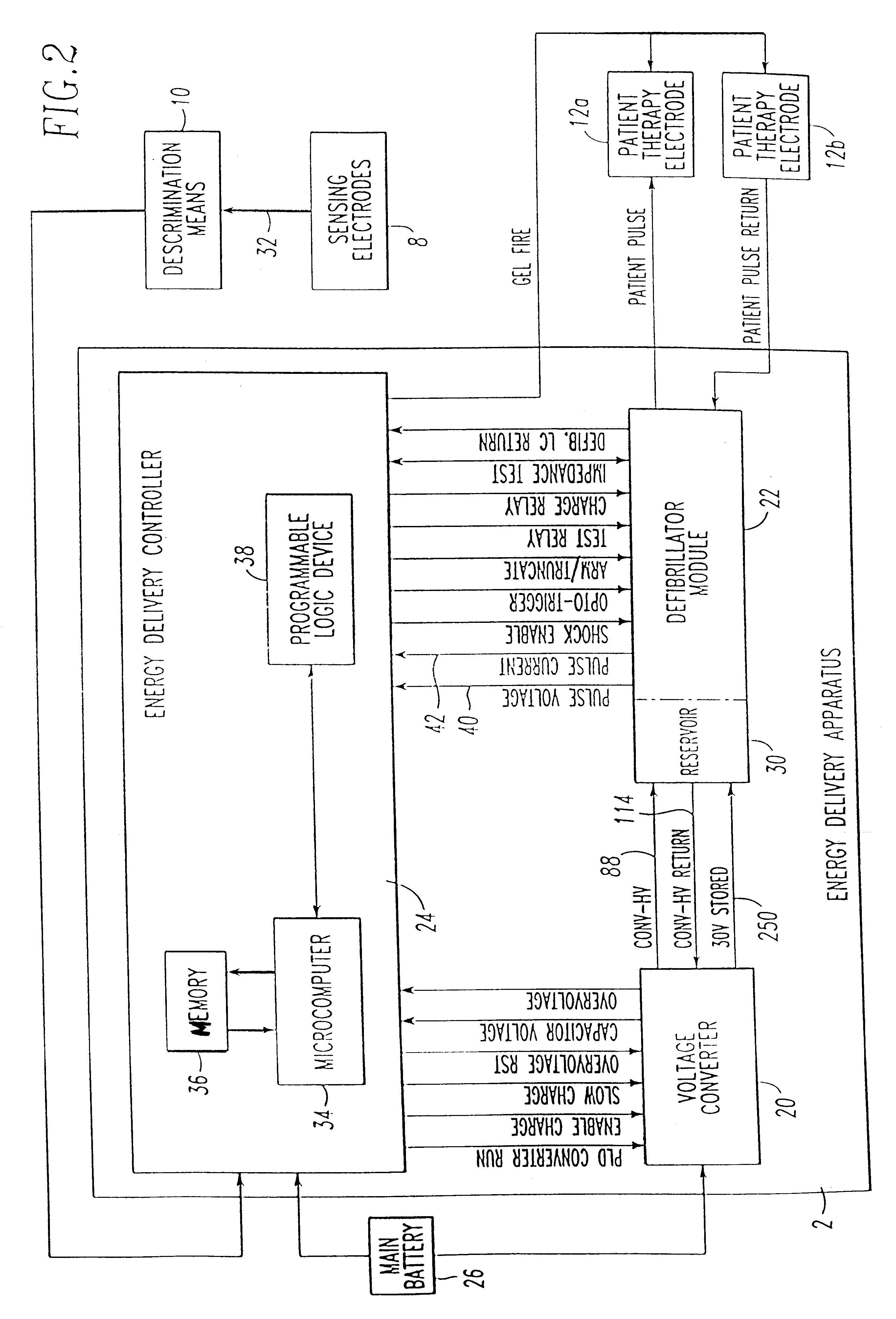Patient-worn energy delivery apparatus
a technology of energy delivery apparatus and patient, which is applied in the direction of electrotherapy, heart defibrillator, therapy, etc., can solve the problems of heart muscle quivering, halting normal contractions, and affecting the normal flow of blood,
- Summary
- Abstract
- Description
- Claims
- Application Information
AI Technical Summary
Benefits of technology
Problems solved by technology
Method used
Image
Examples
Embodiment Construction
The invention herein provides a patient-worn energy delivery apparatus for imparting electrical energy to the body of the patient in response to the occurrence of a treatable cardiac condition. In FIG. 1, energy delivery apparatus 2 is shown being used in conjunction with carrier means 4 in the form of an upper body harness or garment and a waist-worn holster 5 to be worn by patient 6. Apparatus 2 also can include monitoring means 8, internal to the chest garment, for continuously sensing the patient's heart condition. Signals 32, indicative of the patient's heart condition can be provided by monitoring means 8 to discrimination means 10 for determining the presence of a treatable cardiac condition. When such a condition exists, apparatus 2 can deliver electrical therapy in the form of preprogrammed electrical pulses to patient 6 using, for example, pulse electrodes 12a,12b, preferably located anterior at the apex of the heart and posterior between the shoulders. The pulse electrode...
PUM
 Login to View More
Login to View More Abstract
Description
Claims
Application Information
 Login to View More
Login to View More - R&D
- Intellectual Property
- Life Sciences
- Materials
- Tech Scout
- Unparalleled Data Quality
- Higher Quality Content
- 60% Fewer Hallucinations
Browse by: Latest US Patents, China's latest patents, Technical Efficacy Thesaurus, Application Domain, Technology Topic, Popular Technical Reports.
© 2025 PatSnap. All rights reserved.Legal|Privacy policy|Modern Slavery Act Transparency Statement|Sitemap|About US| Contact US: help@patsnap.com



